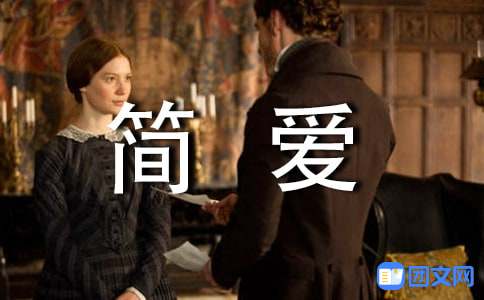简爱英文读后感400
【1】《简爱》英文读后感

Another interesting aspect of the novel is the character Bertha Mason.
Bronte herself, alluding to the latest developments in Victorian psychiatric theory, attributed Bertha’s behavior to “moral madness” (qtd.in Showalter 73).
Women were thought to be more susceptible to such disorders.
Sexual appetite was considered one of the chief symptoms of moral insanity in women; it was subject to severe sanctions and was regarded as abnormal or pathological.
According to Showalter, the periodicity of Bertha’s attack suggests a connection to the menstrual cycle, which many Victorian physicians understood as a system for the control of female sexuality.
Rochester’s complicity in the destruction of his wife’s spirit is indicated in Jane’s recognition of the third story’s resemblance to a corridor in “Blubeard’s castle” (Bronte 138).
In trying to persuade her to become his mistress, Rochester asks, “If you were mad, do you think I should hate you?” “I do indeed, sir,” Jane replies, and she is surely right (Bronte 328).
Bertha’s death, “the purging of the lusts of the flesh,” must precede any successful union between Rochester and Jane.
When they finally marry, they become equals,
“not only because Rochester, in losing his hand and his sight, has leaned how it feels to be helpless and how to accept help, but also because Jane, in destroying the dark passion of her own psyche, has become truly her ‘own mistress’” (Showalter 75).
As a conclusion, Charlotte Bronte’s Jane Eyre is unambiguously one of the most well written novels with profound themes.
It has influenced generations of readers, appealing to both children and adults, women and men.
【2】《简爱》英文读后感
There is much discussion centers on what makes Jane Eyre a compelling work.
Critics unanimously admire its “sharp delineation of the characters, vivid realization of the settings, and powerful theme of redemption through love” (“Jane Eyre” 174).
However, Jane Eyre also has some obvious weaknesses, particularly its “episodic structure and a plot that in places defies credibility” (“Jane Eyre” 174).
According to Schorer, Jane Eyre employs one of the “oldest conventions in English fiction,” and “is very loosely put together” .
According to Kinkead-Weekes, the emphasis on personal selfhood of Jane prisons the development of other characters – “they are continually used for a projection of her or for a focus on her, rather than as selves in their own right” (78).
Kinkead-Weekes also states that Bronte “shows little sense of society as a web of interrelationships, obligations, and shared sustaining vales” (78).
Despite its criticism, Jane Eyre has continued to be the most popular novel of Bronte.
According to critic M.H.Scargill, Jane Eyre marked a turning point in the English novel, away from external concerns and toward personal experience (qtd.in “Jane Eyre” 174).
He calls the novel “a profound, spiritual experience” in which fiction approaches the condition of poetry (qtd.in “Jane Eyre” 174).
As McFadden-Gerber states, “poetry and tension of Jane Eyre marked a new development in adult romanticism, just as Jane herself brought to English fiction a new type of heroine, a woman of intelligence and passion”(2976).
Modern feminists regard Jane Eyre as one of the first feminist novels.
Moreover, Scargill notes “Jane Eyre may speak for women, but it speaks also for all humanity” (qtd.in “Jane Eyre” 174).
Consequently, Jane Eyre catapulted 31-year-old Charlotte Bronte into the upper echelon of Victorian writers.
Margaret Lane, in her Introduction to “Jane Eyre,” remarks that “It is … this rare capacity for emotional feeling, expressed in a singularly musical, pure, and moving prose, which gives Bronte her unique place as a writer” (qtd.in “Jane Eyre” 174).
Similarly, Rebecca Fraser states, “the incandescent power of [Bronte’s] writing gives Jane Eyre … a uniquely flavored niche in the affections of the reading public” (qtd.in “Jane Eyre” 174).
Interestingly, although the early criticisms were generally overwhelmingly favorable, many of the reviews contained with them the seeds of more negative criticism that reflected the time period.
What had been passing reservations concerning the “crudeness of youth,”
the “rude and uncultivated [style] here and there” and “faults on the side of vigor” became an increasingly prevalent theme in the criticism of Charlotte Bronte’s work in the early 1850s (Nestor 13).
This increasing preoccupation with the novel’s “coarseness ” was one manifestation of the sexist double standards operating in the criticism of those days.
When the Christian Remembrancer declared of Jane Eyre that it would be hard to find a book in the annals of female authorship “more unfeminine both in its excellences and defects,”
Charlotte was condemned both ways – in her defects she failed her sex, and in her excellences she transcended it (qtd.in Nestor 13).
【简爱英文读后感400】相关文章:
1.简爱读后感英文
2.简爱英文读后感
7.简爱的英文读后感